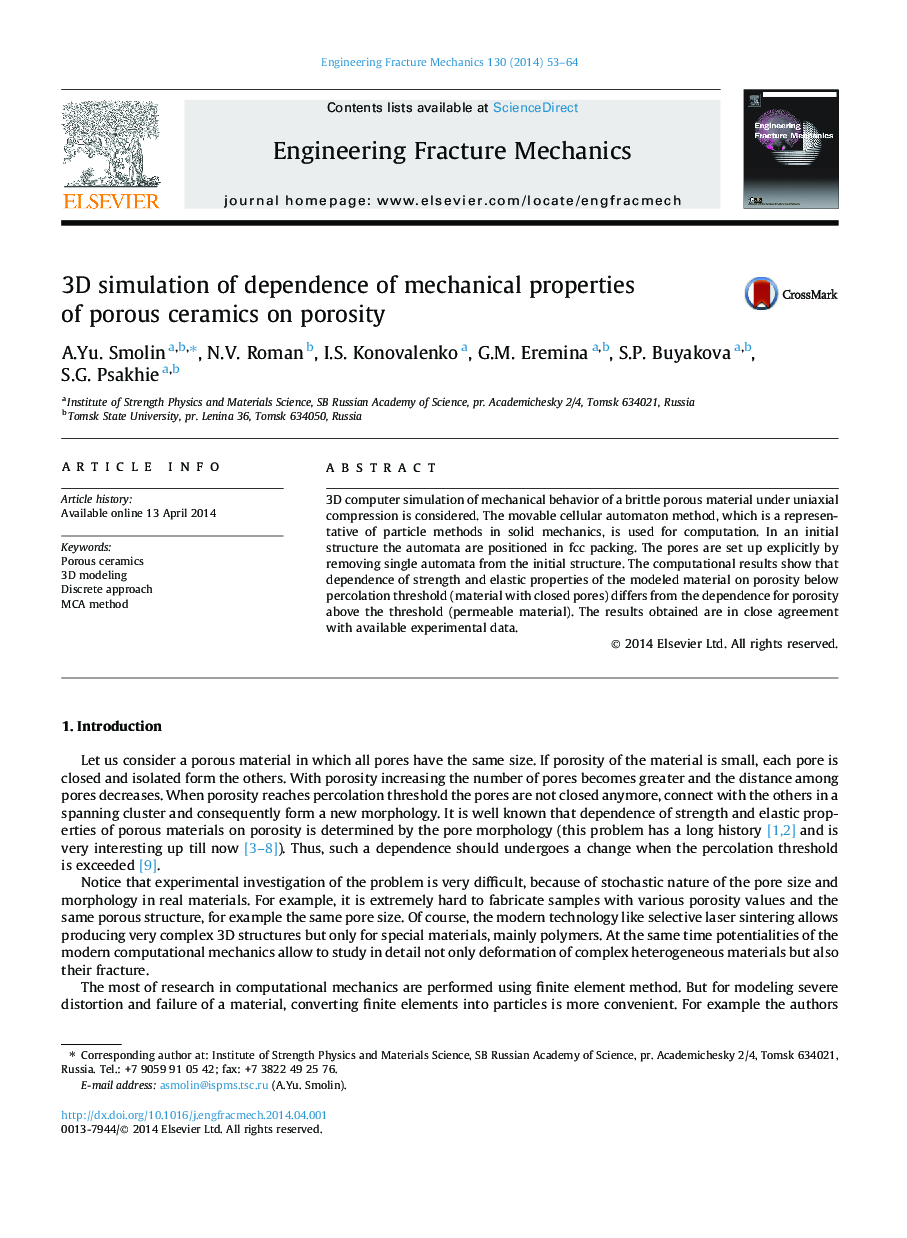| Article ID | Journal | Published Year | Pages | File Type |
|---|---|---|---|---|
| 770516 | Engineering Fracture Mechanics | 2014 | 12 Pages |
•We model uniaxial compression of porous ceramics using discrete elements.•Pores were set explicitly by removing single elements from initial fcc structure.•Results show that percolation transition in porosity leads to change in dependence of mechanical properties of the material.•Modeling results are in good agreement with the experimental data.
3D computer simulation of mechanical behavior of a brittle porous material under uniaxial compression is considered. The movable cellular automaton method, which is a representative of particle methods in solid mechanics, is used for computation. In an initial structure the automata are positioned in fcc packing. The pores are set up explicitly by removing single automata from the initial structure. The computational results show that dependence of strength and elastic properties of the modeled material on porosity below percolation threshold (material with closed pores) differs from the dependence for porosity above the threshold (permeable material). The results obtained are in close agreement with available experimental data.
